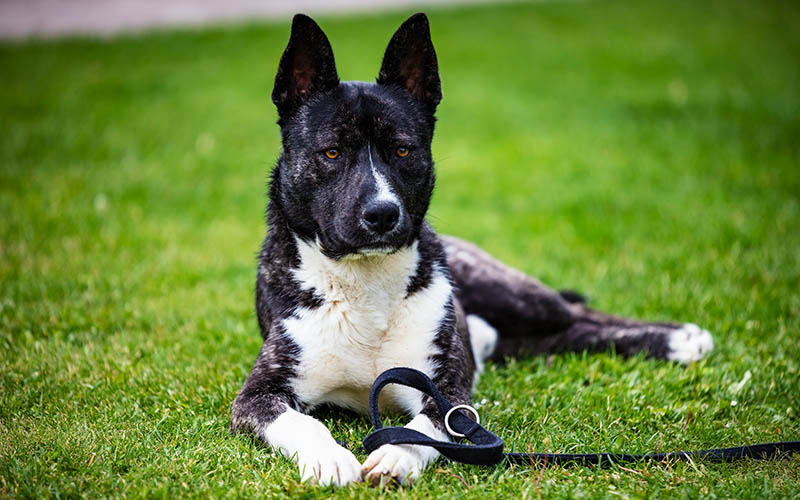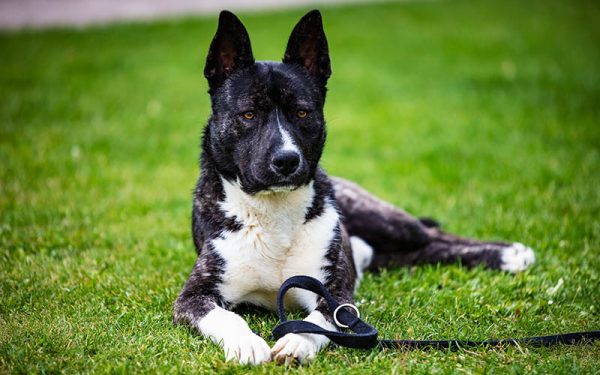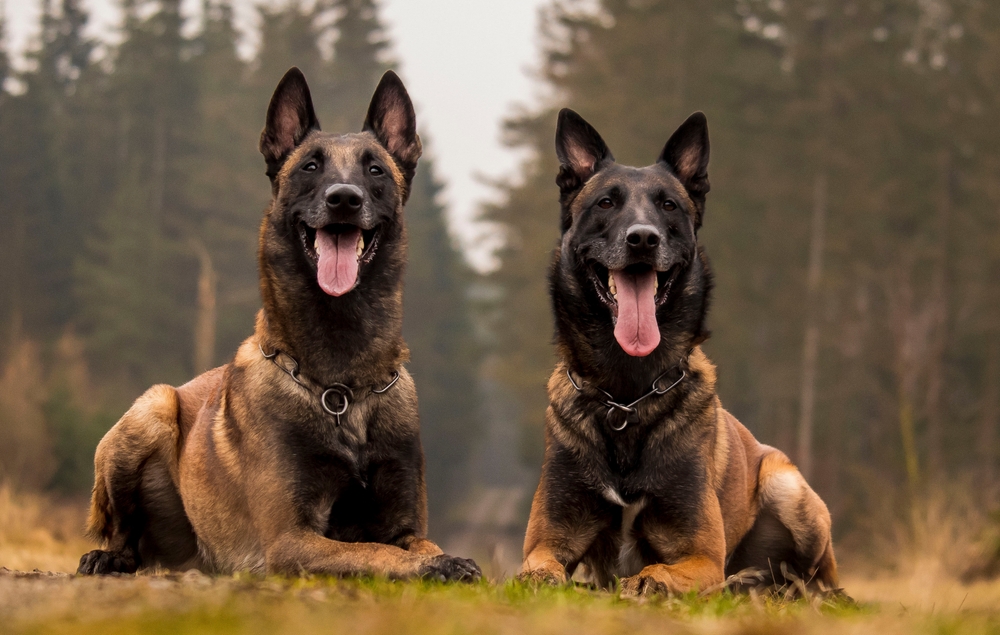Click Below to Skip Ahead
The Akita Shiba mix is a cross between two very similar Japanese guarding breeds, so you can expect them to look a lot like either parent or a straight up mix. As far as temperament, the Akita Shiba mix is fiercely loyal, independent, laidback, and aloof toward strangers. For more detailed information, you’ve come to the right place. Join us below as we explore what the Akita Shiba can look like, more about their personality, and how to best care for them.
Breed Overview
Height:
17–24 inches
Weight:
35–80 pounds
Lifespan:
10–12 years
Colors:
Red fawn, white, brindle, sesame, cream, sable, black, tan
Suitable for:
Active families without kids or with older kids, those seeking a low-maintenance guard dog
Temperament:
Dignified, devoted, fearless, loving, intelligent
The Akita and Shiba are both Japanese breeds known for their triangular ears, intelligence, and intensely loyal personalities. That means their offspring, the Akita Shiba mix, will have a similar family-oriented personality and fearlessness that makes them great watchdogs. As far as appearance, they can display any of the Akita or Shiba colorings, depending on the parents.
Akita Shiba Mix Characteristics
Akita Shiba Mix Breed Puppies
It’ll be difficult to find an Akita Shiba mix puppy because they’re a crossbreed, so you’ll have to seek out accidental litters. Breeders are ruled out because they don’t deal in mixed breeds, so your best bet will be online communities like Facebook or Craigslist. You may be able to find litters of puppies from time to time among either Akita or Shiba fan groups on social media too, but there’s no guarantee.
Another more reliable option is to breed your own Akita Shiba mix puppies if you already have an intact Akita or Shiba. You can approach dog owners of the opposite breed online to propose a breeding arrangement. Common exchanges for breeding include either money or a puppy. While difficult to arrange, this is a more surefire way to get an Akita Shiba puppy of your own that’s descended from your own older dog. Plus, it’s not recommended since you might not know the health history of either dog.

Temperament & Intelligence of the Akita Shiba Mix
Both the Akita and Shiba are known for their bright intelligence, so you’ll have your hands full with a mix! They don’t care for strangers and prefer to spend time with their family or explore and get into mischief around the house. They’re intensely attached dogs with watchful guard dog traits, from being territorial to an innate suspiciousness of strangers.
That said, if you can gain their trust, you have a friend for life. They’re very trainable dogs if you can deal with the occasional stubborn streak and find what best motivates them—usually food! Akita Shibas come from strong-willed, vocal parents and aren’t afraid to get mouthy when they’re upset.
Are These Dogs Good for Families? 🧑🧑🧒
Not every family, that’s for sure! The Akita Shiba mix is a strong presence in the house and needs firm boundaries to thrive and interact with family members safely. They can grow almost as large as an Akita and can get too rough with younger kids, especially without proper obedience training. They can do great with teenagers or older kids with proper supervision, though!
We highly recommend early leash and obedience training, plus ample socialization to curb their strong prey drive on walks; otherwise, they’ll tug every time they see a nearby squirrel or cat. Especially with mixes that grow large, which can make walks difficult if you don’t have a strong grip. Skip the headache and get them socialized and trained early on.
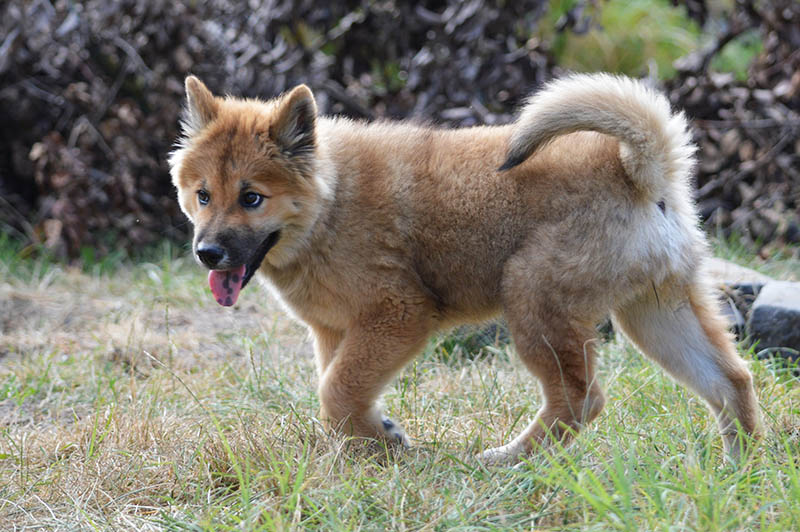
Does This Breed Get Along With Other Pets?
Not really, but they can be socialized early to coexist peacefully with other dogs in the household. The Akita Shiba mix has a strong prey drive toward other small pets like rabbits or guinea pigs and can be actively dangerous to them, so definitely avoid this breed if you have those types of pets. Cats are also not the best idea for the Akita Shiba, but if raised around cats, they can grow to comfortably ignore each other around the house.
Things to Know When Owning an Akita Shiba Mix:
Food & Diet Requirements 🦴
Exact meal portions will depend on how big your Akita Shiba grows. Dogs that take after the medium-ish, 40-pound Shiba size will need less food than Akita lookalikes weighing up to 75 pounds. Either way, you’ll need a high-quality kibble with at least 20% protein and a balanced mix of other essential nutrients like carbs, fat, calcium, and other vitamins that keep them growing strong and healthy.
Exercise 🐕
Akitas and Shibas are highly active dogs, and the Akita Shiba mix is too. They need 1 to 2 hours of vigorous exercise daily to deplete their high energy levels and keep them from growing bored or restless. If not given enough exercise, they can become very mouthy with objects around the house or dig vast trenches across your yard.
Speaking of yards, a secure one is a huge plus with these dogs but not absolutely necessary if you can commit to plenty of walks or trips to a nearby dog park.
Training 🎾
Coming up with and sticking to a training plan as soon as you bring your Akita Shiba mix home will be essential for tempering any tendency toward aggression. While methods vary from crate, potty, leash, and obedience training, the key is always positive reinforcement and redirection and never punishment. Despite their self-assured attitudes, these are sensitive dogs that don’t do well with harsh words.
In addition to training, socializing your Akita Shiba mix with other places, people, and animals from an early age will help “inoculate” them to all sorts of common sights. Without socialization, dogs can become afraid, anxious, and even aggressive. If you’ve ever heard that Akitas are aggressive, for instance, it was probably because the dog was poorly socialized.
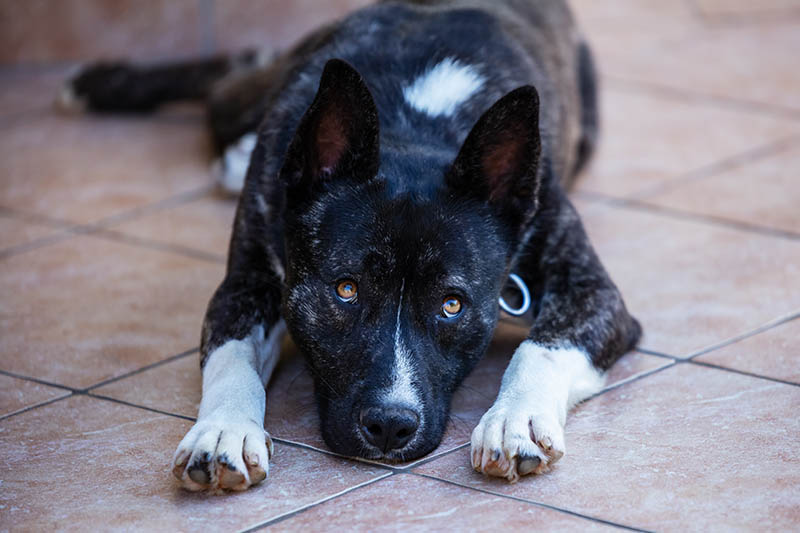
Grooming ✂️
The Akita and Shiba have similar low-maintenance coats that don’t require regular grooming to stay in good shape. In some ways, they’ve been compared to cats because they’re fairly good about grooming themselves. The Akita Shiba has a very dense, plush double coat that doesn’t shed nearly as much as you’d think. However, you should still brush them every week or two to remove dead skin and stimulate healthy skin/hair growth.
Health and Conditions 🏥
Akitas and Shibas are robust, hardy dogs that don’t get sick as often as other breeds. That said, there are still some conditions you should know about that their offspring may develop later in life. Check those out below for an idea of what you may be dealing with later.
- Hypothyroidism: Shibas are susceptible to this deficiency, which can cause changes in their fur, fatigue, weight gain, and changes in appetite.
- Dysplasia: A painful arthritic condition that affects the knees and elbows; larger dogs are more likely to suffer from this condition.
- Dental conditions: Like most dogs, Akita Shiba Mixes can develop dental disease if their teeth and gums aren’t taken care of.
- Eye problems: Both Akitas and Shibas are more prone to developing cataracts than other breeds.
Male vs. Female
There’s little hard information out there indicating that male and female Akita Shiba mixes have different personalities in any meaningful way. Physically, male dogs are usually always larger than females, but you have to account for the breeds and individuals in question. For instance, a female Akita Shiba mix puppy may grow larger than a male in the same litter if the female takes after the Akita and the male takes after the smaller Shiba.
3 Little-Known Facts About the Akita Shiba Mix
1. The Most Famous Akita Was Named Hachiko
The most famous dog in Japan was an Akita named Hachiko, who lived in Tokyo during the early 20th century. Hachiko was known by everyone because he went to the same train station every day to meet his master—even 9 years after his master had passed away. Today, Hachiko has been used as a symbol for loyal friendship and there’s even a statue of him outside the Shibuya subway station.
2. Shibas and Akitas Are Closely Related to Wolves
The Shiba Inu and Akita Inu are thought to be some of the oldest domesticated dogs in the world, reaching back to the days when the Terracotta Army was being entombed in 200 BC or so. According to this 2004 study, Shibas and Akitas were noted to be more closely related to gray wolves than nearly any other breeds. Two others in this category include the Chow Chow and Alaskan Malamute.
3. Akitas and Shibas Almost Went Extinct
By WWII, there were very few Akitas and Shibas left in Japan because the military would take dogs away from civilians and many were killed in bombing raids. There were very few left after the war, but many breeders devoted themselves to restoring the breeds to their former glory. Among them was Helen Keller, who visited Japan after the war and fell in love with them. She was the first person to bring Akitas into the US.
Final Thoughts
The Akita Shiba Mix is a cross between two of Japan’s most quintessential breeds, combining many of their best attributes. They’re a loving, loyal, and courageous addition to any household, but it’s important to look at the pup’s parents when assessing what they might be like as an adult.
See also:
- Aki-Poo (Akita Poodle Mix): Care, Pictures, Info & More
- Akita Basset: Breed Info, Pictures, Care Guide & More
Featured Image Credit: Soos Jozsef, Shutterstock

